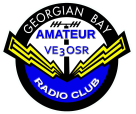
+- GBARC Forum (https://www.gbarc.ca/ForumBB)
+-- Forum: Amateur Radio (https://www.gbarc.ca/ForumBB/forumdisplay.php?fid=5)
+--- Forum: NEWS (https://www.gbarc.ca/ForumBB/forumdisplay.php?fid=23)
+---- Forum: ISED, RAC Bulletins (https://www.gbarc.ca/ForumBB/forumdisplay.php?fid=13)
+---- Thread: RAC Ontario Sections Bulletin for October 28, 2023 (/showthread.php?tid=1069)
RAC Ontario Sections Bulletin for October 28, 2023 - Richard VE3OZW - 2023-10-28
This is V_3___, Official Bulletin Station for Radio Amateurs of Canada with this week's bulletin.
NATIONAL/INTERNATIONAL NEWS
1. FCC To Vote on Removing Symbol Rate Restrictions (U.S.)
ARRL welcomes news of a scheduled vote by the Federal Communications Commission
(FCC) to consider removing symbol rate restrictions.
In the draft decision, the FCC would replace the current HF restrictions with a 2.8 kHz
bandwidth limit. The Commission also announced that it will consider a Further Notice in
which it will propose eliminating similar restrictions where they apply in other bands and
consider relying on signal bandwidth limits. If both actions are adopted by the Commission,
there will be a period for public comment on the Further Notice issues.
ARRL Director of Emergency Management Josh Johnston, KE5MHV, said the changes
will result in a tremendous time savings during disasters, when every second counts.
"We will be very pleased to have the FCC remove the restrictions on symbol rate for the
amateur bands. This will eliminate the need for temporary waivers during an event and
provide the ability to train and exercise using the higher symbol rate, allowing increased
data capability to our served agencies and partners."
-- full article at arrl news
ONTARIO SECTION NEWS
ITEMS OF INTEREST
2. Amateur Radio STEM Education Takes Center Stage at Pacificon
ARRL Education and Learning Manager, and IARU Region 2 Youth Coordinator, Steve
Goodgame, K5ATA, gave the keynote address at the 2023 ARRL Pacific Division Ham
Radio Convention, also known as Pacificon.
His presentation, to a packed audience, was a highlight of the convention. Goodgame's
passion and vision for promoting youth involvement in the hobby shined in his speech
as he discussed STEM education and the importance of inspiring youth and teachers to
engage in amateur radio and wireless technology.
Watch "A Vision of the Future of Amateur Radio" on the ARRLHQ YouTube Channel
https://youtu.be/fTi8LDz4dS4?si=GQfSd3k2BS__ERMy
to learn how to grow the next generation of radio amateurs from one of the leaders in the space.
-- arrl newsletter
3. Proposed Revision of the RST standard for signal reporting
The familiar RST standard for signal reporting was introduced in October 1934
QST magazine. The concept was developed by Arthur Braaten W2BSR who
correctly recognized that the signal reporting system then in use was, in his
words, “little better than useless”. Clearly Arthur’s RST system has been a
resounding success having been in global use for 89 years and running.
However, technology and time itself has developed to a situation where the
time has come for a revision.
Standard signal reporting revision really means upgrade the S term while
retaining R term and eliminating the T term.
S. The “S” term should not be just another judgement call but should be
established by instrument measurement and the overwhelming majority of radio
amateurs are already equipped to make this change. Traditionally the S-term is
an S-meter derived quantity. Also, the S-meter by itself does not report the whole
receive picture but even with S-meter inconsistencies it is still a good idea. The
role of the noise in the report is equally important; adjusting the S term to be a
signal to noise ratio would be ideal. Specifically, an S-term report of the signal
amplitude in dB above the noise floor provides a more complete picture of the
signal reception at that moment. Now that we are trending toward SDR receivers
with good panadapters the precise signal amplitude measurement as well as signal
to noise ratio may be established at a glance but an S-meter does the job as well.
S meter reading:
The S term attempts to quantify signal strength using a scale from 1 to 9 with
6 or 7 being a typical signal report for an easy-copy signal. The problem with the
signal strength term is that it does not include noise. With this in mind a revised
S term should express a signal to noise ratio as a single number. This would be
a number that reports the signal peak amplitude above the noise floor. This is
visually obvious when viewing a panadapter.
Persuading hams to adopt dB above NF strength report is bound to take time.
If all the folks who agree with these change recommendations there may be general
acceptance on the horizon. Here’s a possible road to adoption: All readers who like
this recommended signal reporting method continue to report signals with the
expected RST system but include this new RS system immediately following
the RST. Example: RST 589, RS is 5x12 - sig is peaking 12 dB above NF.
For a great many hams this is likely to spark a discussion. Hopefully, this article
will be referenced as an introduction.
Source: Tom Pierce K8EBR (full article at daily.hamweekly.com)
4. Amateur Radio on the International Space Station (ARISS) is planninga 40th anniversary celebration conference for February 22 - 24, 2024.
The 40th Anniversary Conference will be held at the Center for Space Education:
Astronauts Memorial Foundation, located adjacent to the NASA Kennedy
Space Center Visitors Center in Florida. Organizers hope to gather volunteer
teams, astronauts, space agency officials, educators, and space and amateur
radio enthusiasts to attend the event. For registration information and special
event pricing at local hotels, visit the event website at https://www.ariss.org/,
and choose the drop-down menu tab labeled 40th Anniversary.
ARISS is a cooperative venture of international amateur radio societies and
the space agencies that support the ISS. In the US, participating organizations
include NASA's Space Communications and Navigation program (SCaN),
the ISS National Laboratory -- Space Station Explorers, ARRL, and AMSAT.
-- arrl newsletter
This concludes this week's bulletin. Does anyone require repeats or clarifications?
Hearing none, This is V_3___ returning the frequency to net control.
Bulletin sent from Official Bulletin Manager VA3PC
_._,_._,_